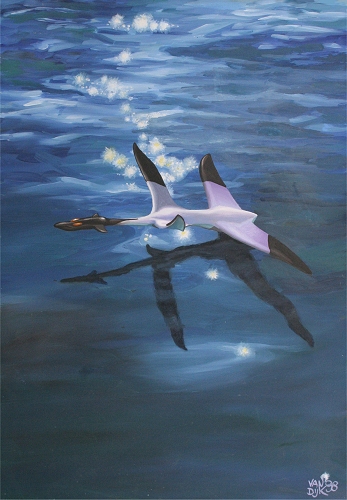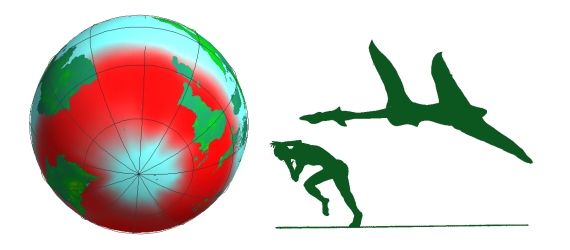


|
The seasoar is a typical tetrapterate like the flyg, and its life story is a good example of typical avian hermaphroditism: two partners meet, fertilise one another, and each grows their own young. Large adult seasoars indeed follow this textbook path, and each of the two mates carry an equal burden of procreation. Smaller individuals cannot afford the costs of growing a young as easily, and tend to cheat! The follow the male route only, and will try to impregnate a larger individual without growing any young themselves. Mating with such a small 'rogue' is a bad deal for a large individual, as it halves the offspring. Small individuals are therefore not popular partners, ensuring that small seasoars generally wind up with other small ones. They may try the rogue male route, but when such individuals grow large, they will scorn the attention of any small seasoars. Sex is rarely simple, hermaphroditic or otherwise. |
|
Not surprisingly, a species of the open ocean such as the seasoar can be found over large areas. It does have some preferences though, as it avoids the coldest polar seas and is not found in tropical areas either. It has a preference for small islands for breeding purposes, but can be found on the coats of continents as well. It appears to remain happy as long as it has a steady supply of cloakfish. Habitat: Skies and surface of temperate southern seas |

|